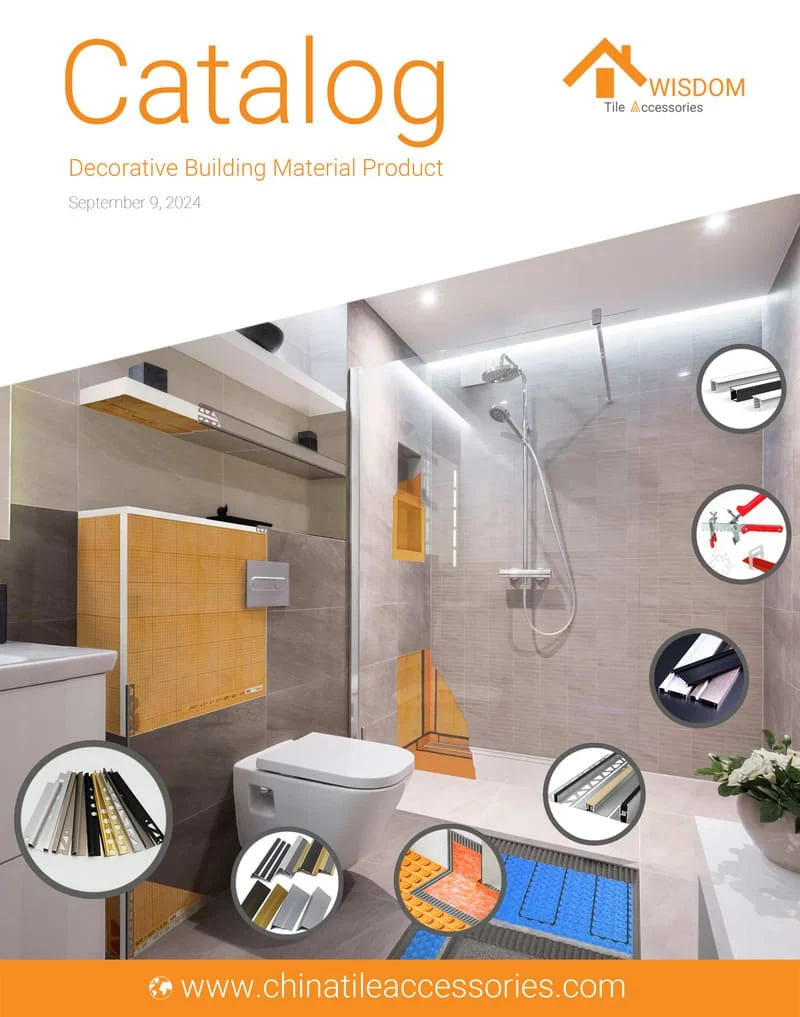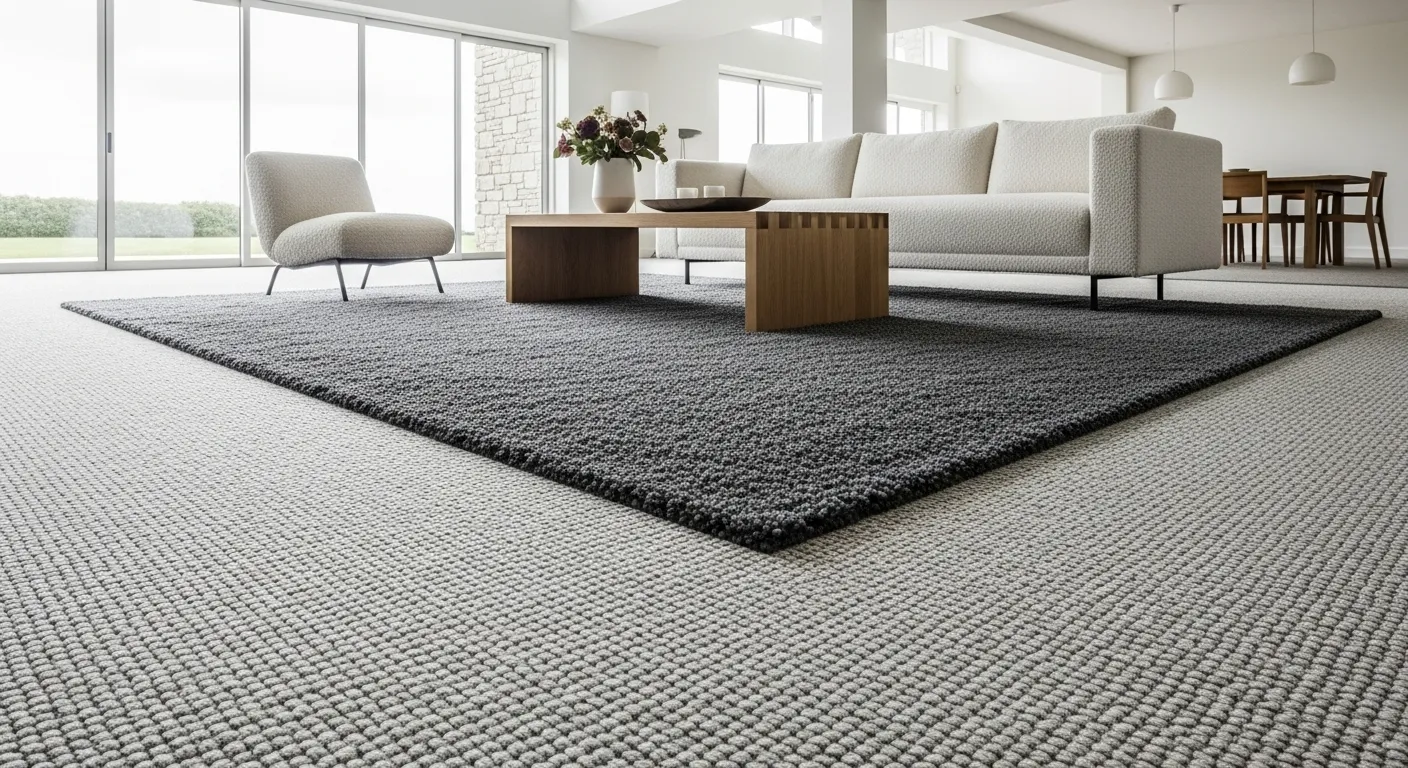
The choice between textured and plush carpet flooring is more than a design preference. It is a declaration of lifestyle. One offers the immediate, sensory appeal of deep comfort, while the other promises lasting resilience against the realities of daily life. This fundamental conflict is where most homeowners begin and often where confusion sets in. This guide moves beyond surface-level comparisons. We will dissect the technical differences that dictate performance and longevity, empowering you to make a choice that aligns with your true needs and ensures your satisfaction for years to come.
What Is Textured Carpet?
A textured carpet is defined by its construction. Its yarns are twisted very tightly, often five or more times per inch, and then heat-set to lock in that twist permanently. These twisted fibers are then cut, but frequently at slightly different heights. This construction method is not accidental; the high twist gives each fiber structural integrity, while the varied surface scatters light and conceals the minor displacements caused by foot traffic. This is why it is often called a "trackless" carpet.
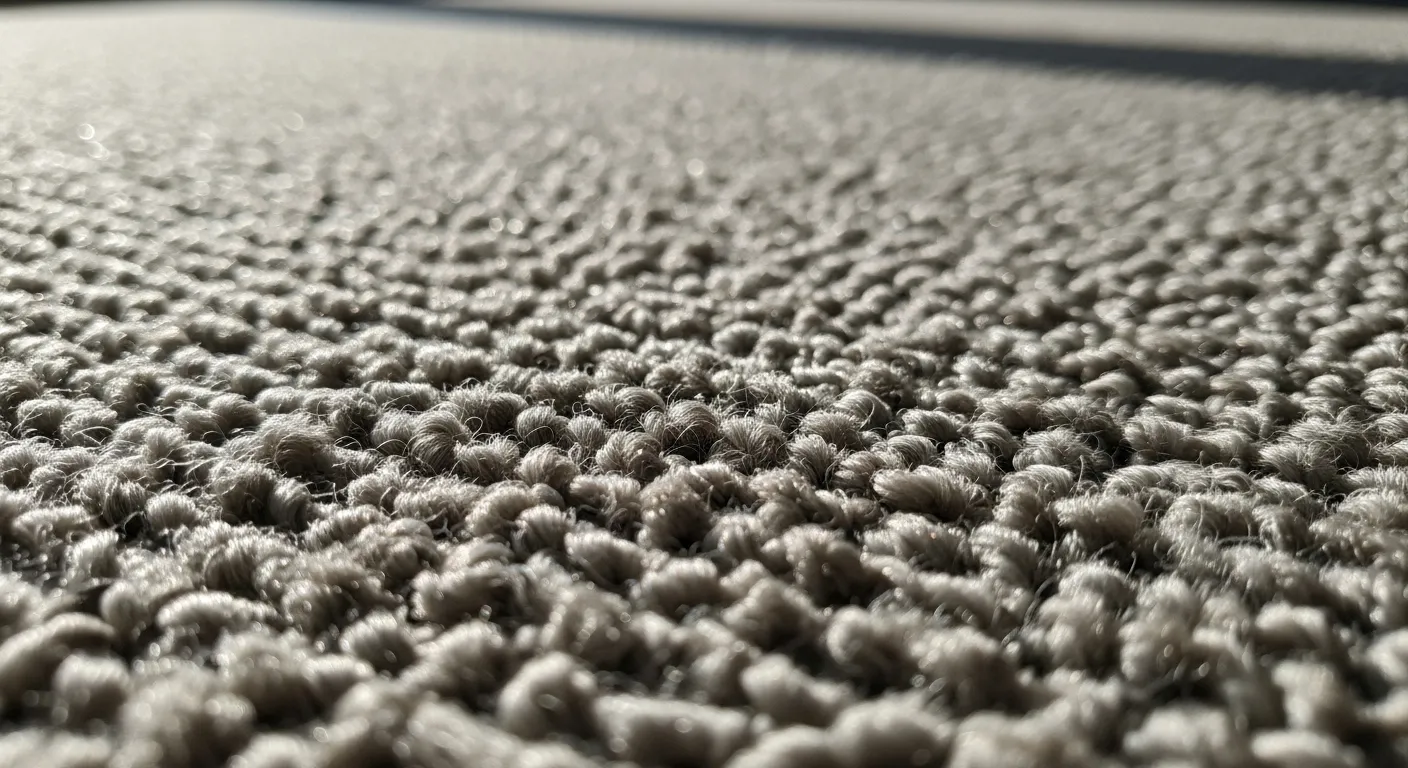
What Is Plush Carpet?
In contrast, a plush carpet achieves its signature look through uniformity and density. Its fibers are also cut, but they are sheared to a precise, level height, creating a smooth, even surface that feels like velvet. The yarns are packed very closely together to create this dense, cushioned feel. Its entire aesthetic is built on this smooth, monolithic plane of color and texture, which is both its greatest strength and its most significant practical weakness.
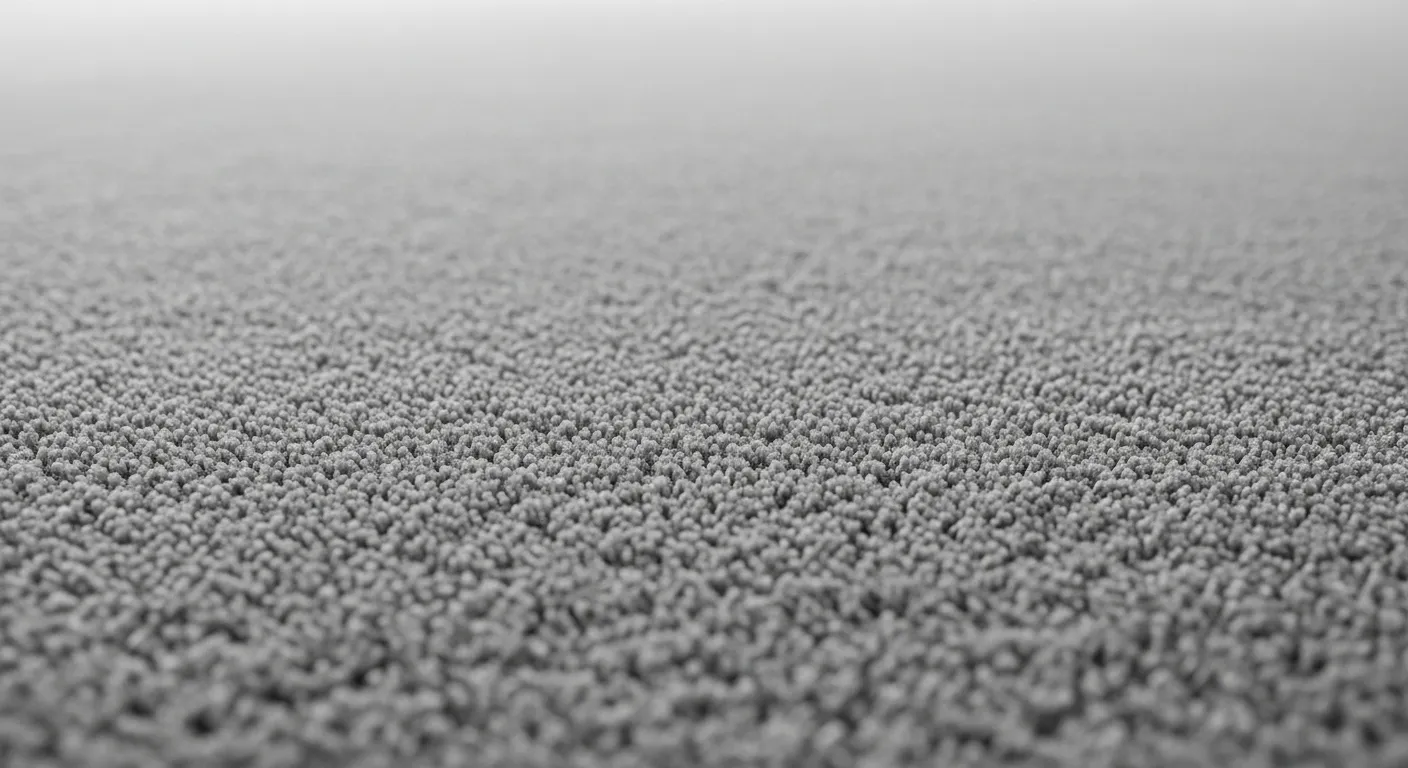
Key Differences: An Honest Evaluation
A homeowner's long-term satisfaction depends on understanding how these construction differences translate into real-world performance. Here is a direct evaluation of how each style holds up to the demands of a home.
Durability and Resistance to Wear
This is the most critical point of divergence. A textured carpet is engineered for resilience. That high Yarn Twist (TPI) creates strong, tight bundles that resist untwisting and splaying open. This is what prevents the carpet from crushing and matting in walkways. If you are looking for a carpet that will not flatten easily, the high twist of a textured style is the technical answer to your need.
A plush carpet, on the other hand, is far more susceptible to Pile Crush. Its individual fibers stand upright with less structural reinforcement from a tight twist. Over time, foot traffic will bend these fibers, and they can lose their ability to bounce back. This is what leads to the premature "uglying out" of the carpet, where it looks worn and flattened long before the fiber itself is actually worn out.
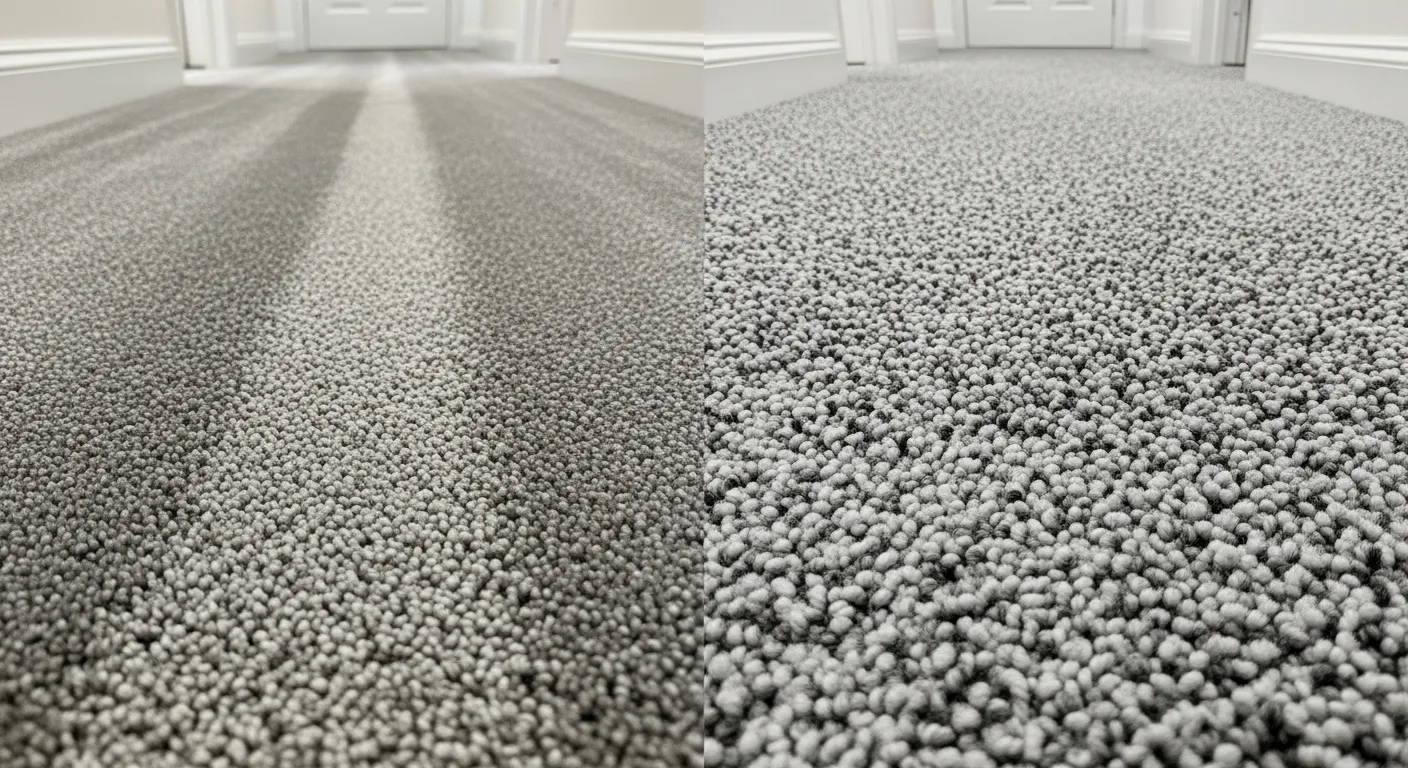
Hiding Footprints, Vacuum Marks, and Daily Dirt
Here again, the difference is stark. A textured carpet excels at camouflaging the evidence of everyday life. Its varied, multi-directional surface and often multi-tonal coloration break up the clean lines of footprints and vacuum paths. It maintains a consistent appearance with less daily effort.
A plush carpet’s uniform surface acts as a canvas, highlighting every mark. This effect, known as tracking, means every footstep and every pass of the vacuum is visible. Furthermore, plush carpets are subject to a phenomenon called shading or watermarking. This is not a defect, but an optical effect where light reflects differently off fibers bent in different directions, creating patches that look lighter or darker. For some, this is a sign of luxury; for others, it is a source of constant visual distraction.
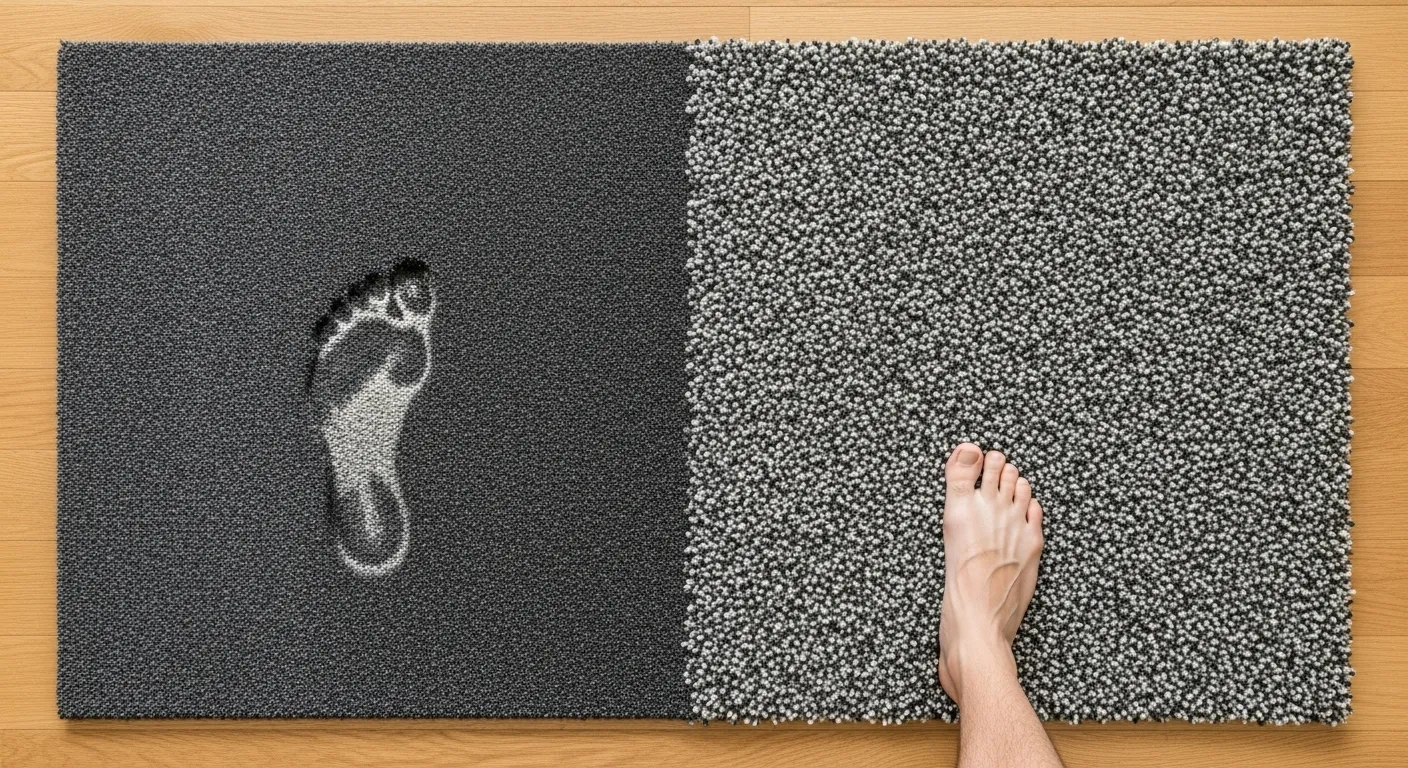
Feel and Underfoot Comfort
For pure, deep softness, a plush carpet is unmatched. The sensation of sinking into a dense, velvety plush pile is the primary reason it is chosen for spaces dedicated to comfort, like bedrooms.
A textured carpet provides a different kind of comfort. It is still soft and substantial underfoot, but it offers a more practical balance of comfort and firmness. It provides a comfortable surface without the vulnerability that comes with the plush style.
Maintenance and Cleaning Requirements
The dense, deep pile of a plush carpet, while comfortable, requires a more rigorous maintenance routine. It can trap dirt deep within its fibers and requires frequent, diligent vacuuming to lift the pile and maintain its appearance.
A textured carpet is generally more forgiving. The tight twists of its fibers help to keep dirt on the surface, making it easier to remove with regular vacuuming. Its ability to hide minor soiling means it does not demand the same level of constant attention to look clean.
To summarize these key differences, the following table provides a direct comparison:
Attribute | Textured Carpet | Plush Carpet |
|---|---|---|
Durability | Excellent. High TPI resists matting and pile crush. | Fair to Poor. Prone to flattening and "uglying out." |
Hiding Wear & Dirt | Excellent. Camouflages footprints, vacuum marks, and soil. | Poor. Shows every mark due to its uniform surface. |
Underfoot Feel | Good. A comfortable and firm, practical softness. | Excellent. Unmatched deep, velvety, luxurious softness. |
Maintenance | Low. More forgiving and requires less frequent grooming. | High. Demands frequent vacuuming to look its best. |
Best For | High-traffic areas: hallways, family rooms, stairs. | Low-traffic areas: bedrooms, formal living rooms. |
More Than Just Carpet: What Else You Need for a Lasting Floor
Choosing between textured and plush is a critical first step, but the carpet itself is only one part of a complete flooring system. A high-quality carpet can fail prematurely if its supporting components are neglected. To ensure your investment truly lasts, you must consider these three elements with equal seriousness.
A Quick Guide to Nylon, Polyester, and Triexta
The fiber is the DNA of your carpet. While we have discussed texture, the fiber's inherent properties dictate its core performance. For cut-pile carpets like these, the choice generally comes down to three synthetics.
- Nylon is the industry benchmark for resilience. Its molecular structure allows it to bounce back from compression, making it the best choice for resisting crushing in high-traffic areas. Its weakness is that it is not naturally stain-resistant and relies on factory-applied treatments.
- Polyester (PET) is naturally hydrophobic, meaning it repels water-based spills and offers excellent inherent stain resistance. However, it is less resilient than nylon and more prone to matting over time, which can create a "value trap" where a lower initial cost leads to premature replacement.
- Triexta (PTT) was engineered to bridge this gap. It offers durability that approaches nylon's resilience while having permanent, built-in stain resistance that will not wear away.
The Role of Carpet Padding (Underlay)
Carpet padding is not an optional upgrade for comfort; it is a mandatory component that protects your carpet. It acts as a shock absorber, taking the impact of foot traffic and preventing the carpet backing from breaking down. Without proper padding, your carpet will wear out significantly faster. Two specifications are critical: density and thickness. For most homes, an 8-pound density pad provides the best balance of support and comfort. The thickness should not exceed 7/16 of an inch; a pad that is too thick allows for excessive movement, which can stretch the carpet and cause wrinkles.
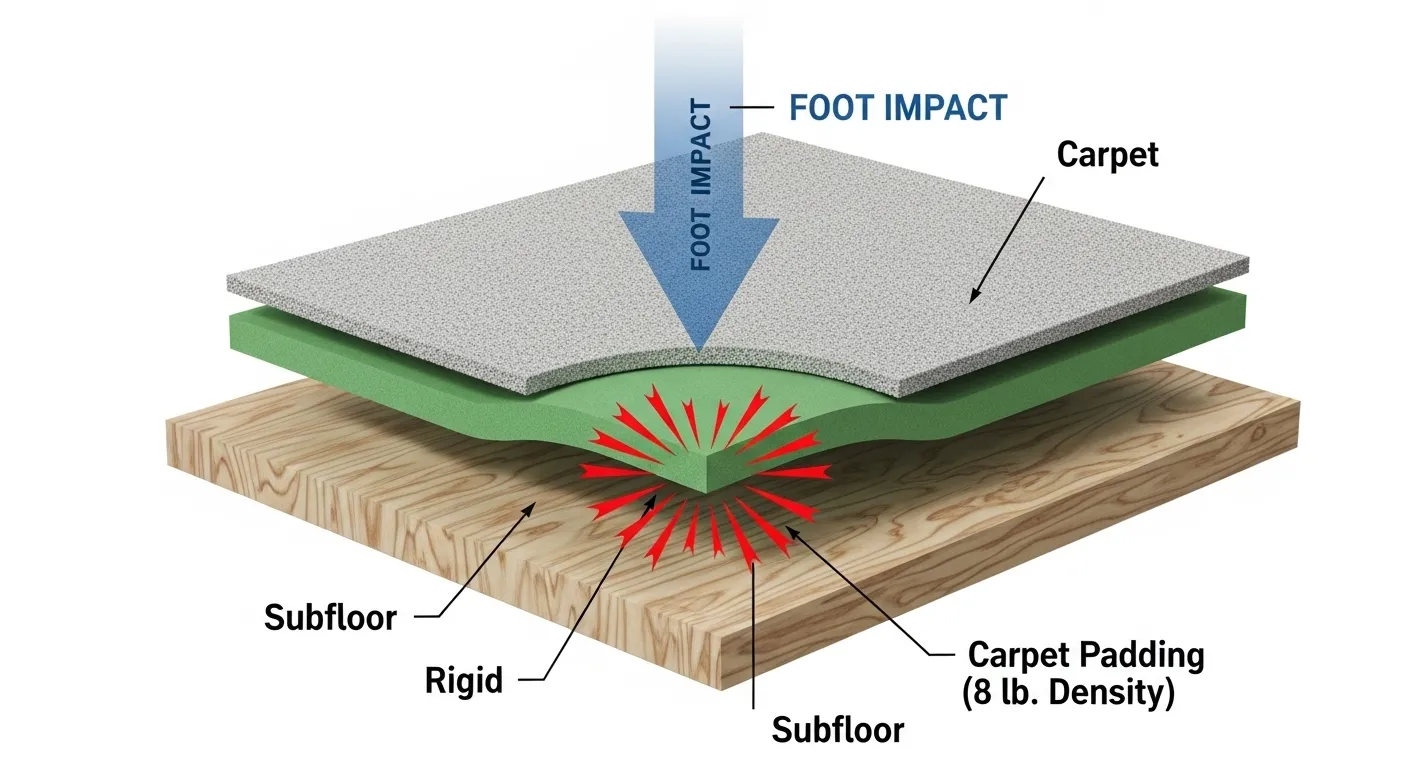
Why Professional Installation Is Not Optional
Even the best carpet and pad will fail if installed improperly. The single most important step in a residential installation is the stretching. A professional installer must use a power stretcher, a tool that braces against opposite walls to apply uniform, high tension across the carpet. Using only a knee kicker, which is designed for positioning, is a sign of poor workmanship and is the number one cause of ripples and buckles developing over time.
Common Installation Problems and How to Solve Them with the Right Accessories
A truly finished project addresses the small details that prevent long-term problems. Here are common issues that arise and the professional solutions to address them.
Problem 1: Worn, Unsafe Carpet on Stairs
Stairs are the most punishing environment for carpet. The edge of each step endures concentrated force, causing the carpet to crush and wear through quickly, creating an unsightly and slippery hazard.
- Solution: Installing Stair Nosings over the edge of each carpeted step is the solution. An Aluminum Stair Nosing provides a durable shield against impact, dramatically extending the carpet's life. For superior safety, an Anti Slip Stair Nosing with Rubber Strip offers essential grip to prevent falls.
Problem 2: Fraying Edges Where Carpet Meets Other Floors
Where carpet meets tile or wood, the raw, cut edge is vulnerable. Without proper protection, this edge will fray, unravel, and lift, creating a trip hazard and an unprofessional finish.
- Solution: A high-quality Carpet Transition Strip is required. These profiles are designed to securely cap the carpet's edge and create a smooth, clean transition to the adjacent flooring material, preventing damage and ensuring a finished look.
Problem 3: Scuffed Walls from Vacuuming
Traditional painted wood or MDF baseboards are easily damaged by vacuum cleaners, leading to scuffs, chips, and a worn appearance along the edges of your new carpet.
- Solution: Upgrading to a more durable material is a permanent fix. An Aluminum Skirting Board or Stainless Steel Skirting Board is impervious to such impacts, maintaining a crisp, clean line and protecting your walls for the life of the carpet.

Final Recommendations: Which Carpet Should You Choose?
The right choice is not about which carpet is "better," but which is best suited for your specific needs.
- For High-Traffic Areas (Hallways, Family Rooms, Stairs): The verdict is clear. A Textured Carpet is the superior choice. Its inherent durability, resistance to matting, and ability to hide daily wear make it the most practical and long-lasting option for an active household.
- For Low-Traffic Sanctuaries (Bedrooms, Formal Living Rooms): A Plush Carpet is an excellent option here, where comfort and luxury are the primary goals. To ensure longevity, invest in a high-density plush made from a resilient fiber like Nylon or Triexta, and be prepared for the higher maintenance it requires.
Ultimately, remember that you are not just buying carpet; you are investing in a complete flooring system. A quality carpet, supported by the right padding and professional installation, and finished with durable accessories, is the only formula for lasting satisfaction.
Frequently Asked Questions
What is the best carpet that doesn't flatten?
Carpets with a high yarn twist and dense construction are the most resistant to flattening. Look specifically for textured or frieze styles, as their tightly twisted fibers offer superior structural resilience. For fiber type, nylon is the industry leader in resisting crushing and matting, making it the best choice for high-traffic areas where flattening is a primary concern.
Is plush carpet worth the extra cost?
Plush carpet can be worth the cost if your priority is unmatched softness in a low-traffic environment, such as a formal bedroom or sitting room. However, if you are carpeting a busy area, its higher cost may not provide good long-term value, as it is prone to showing wear, footprints, and flattening, which can lead to premature "uglying out."
Is textured carpet harder to clean than plush?
No, textured carpet is generally considered easier to maintain than plush. Its multi-tonal, varied surface is excellent at hiding minor daily soil and footprints. Furthermore, the tightly twisted fibers tend to keep dirt closer to the surface, making it easier to remove with regular vacuuming, whereas debris can become more deeply embedded in a dense plush pile.
In what rooms is carpeting a poor choice?
Carpet is a poor choice for any area with high moisture or frequent spills. This primarily includes full bathrooms, kitchens, and laundry rooms. The constant exposure to moisture can lead to mold and mildew growth within the carpet and padding, creating an unhealthy environment and potentially damaging the subfloor.


